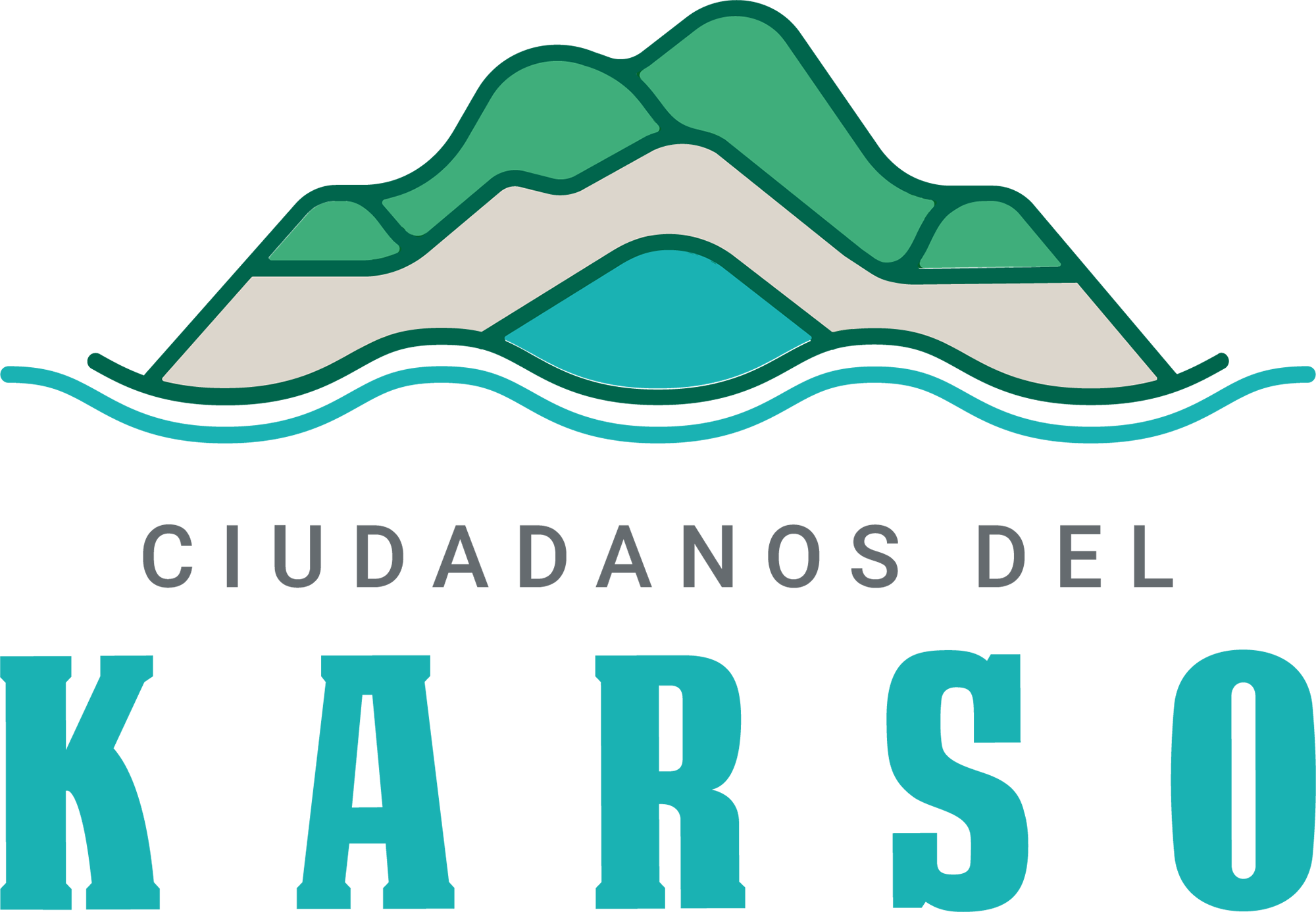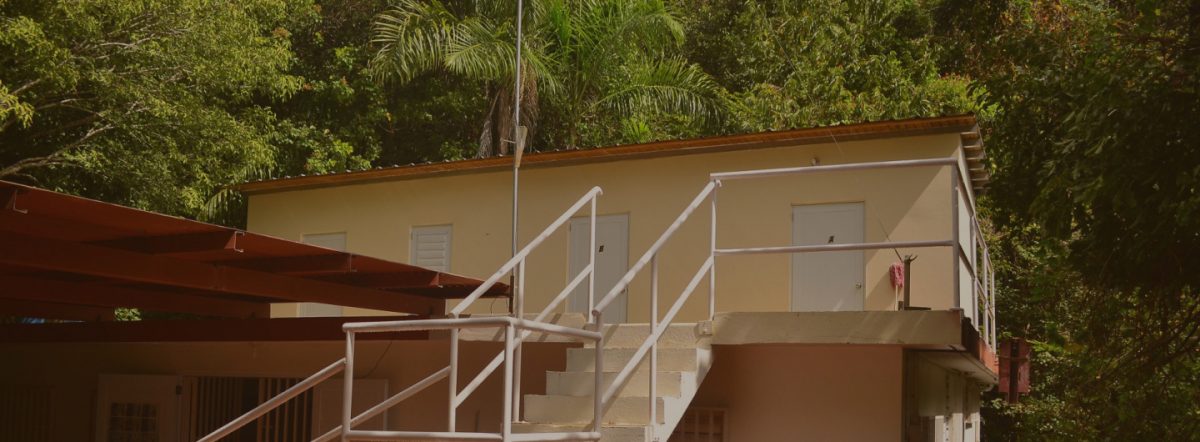Natural Reserve
Welcome. Ciudadanos del Karso, a non-profit organization, will be responsible for the administration and management of the Mata de Plátano Field Station, a role previously carried out by the Interamerican University, Bayamón campus. The Station is located in the Mata de Plátano Nature Reserve, 7 km from the center of Arecibo and an hour away from San Juan, Puerto Rico. It serves as a study and research space for students, professors, and individuals interested in learning more about karst ecosystems. The station is equipped with dormitories, a classroom, and other facilities needed for field and laboratory work. It is the only field station in the karst of Puerto Rico.
The natural environment in Puerto Rico and the Nature Reserve
Puerto Rico’s flora and fauna include both continental elements and species native to the Greater and Lesser Antilles, with over 3,500 vascular plants recorded on the island. Of these, there are more than 750 species of trees. There are 2,329 native species and 1,077 introduced species, some only cultivated and others naturalized. As for mammals, there are 13 species of bats, two of which are endemic to the island, with over 50% endemic to the Antilles. Other terrestrial mammals, such as monkeys, pigs, and mongooses, were introduced. In the waters surrounding the island, 17 species of marine mammals have been reported. Observations have been made of 370 species of birds (17 endemic, 107 residents, 34 introduced, and 229 migratory), 67 species of reptiles (61 native, including 12 from the Anolis genus, and 6 introduced), and 25 species of amphibians (17 from the Eleutherodactylus genus). There are more than 10,500 species of invertebrates.
The Station is located on the northern coast, and within less than an hour’s travel, there are three state forests in the northern karst region and two state forests in the central mountain range on volcanic substrate within an hour’s drive. It is half an hour away from the Caño Tiburones nature reserve, the largest herbaceous wetland in Puerto Rico.
The Mata de Plátano Reserve consists of a humid forest with some undisturbed areas interspersed among different stages of natural succession. Next to the Mata de Plátano reserve is the El Tallonal reserve, and together they cover 162 hectares. The Tanamá River borders the El Tallonal reserve for nearly a kilometer. In both reserves, there are several observation points distributed across the various stages of forest succession, making it ideal for research. The most notable aspect of the fauna in “Mata de Plátano” is the bat-boa interactions.
Research
The reserve is suitable for research activities ranging from the physical sciences to the social sciences, and even the humanities. The most active areas of research have been plant ecology, phenology, natural community ecology, and restoration ecology.
Some recent research topics worked at the Reserve include:
– Thermal ecology and movement patterns of Anolis lizards.
– Understanding temporal changes in bat communities through paleontological excavations.
– Population estimates of hot cave bat assemblages in Puerto Rico.
– Population dynamics of different taxonomic groups, with emphasis on birds.
-Management of endangered species and “Gap Analysis”.
– Groundwater mapping using remote sensing imagery in a karst terrain.
But the Reserve is more than a center for scientific research. It is also an excellent training ground, for students to become better observers of natural and cultural systems, to be inspired by the environment, and to become effective natural historians or science communicators to the general public. Indeed, the Reserve is itself a powerful example of the importance of understanding the legal and economic frameworks in which environmental conservation thrives, despite the difficulties. Citizens of Karso invites law professors, social planners, geographers, anthropologists, historians, sociologists, and humanists to consider the Reserve as a space in which to conduct research and train students. The complexity of karst systems demands a diversity of interdisciplinary approaches, and the Reserve is open to all of them.
A compilation on the importance, complexity and opportunities of karso in Puerto Rico is available at: https://data.fs.usda.gov/research/pubs/iitf/pr_karst_english.pdf
Facilities
There are a total of twenty-two (22) beds (double bunk beds) distributed on two floors. There are individual double bathrooms on the second floor and a shared bathroom on the second floor. In addition, on the second floor there is a kitchen, a small classroom, a laboratory and a large terrace.
The Station is 15 minutes away from pharmacies, bakeries, hardware stores, supermarkets, and restaurants, and less than 30 minutes from hospitals and shopping centers.
Station Facilities
Beds
Meeting room
Bath
Wifi
Sleeping bags
Laboratory
Clothes washers
Kitchen
Pets
Please note that pets are not allowed at any field location.
Important Information
- Luggage from flights arriving from the continental United States is not subject to customs inspection, but plant and animal material leaving Puerto Rico is inspected by the U.S. Department of Agriculture.
- No alterations to the Station or the Reserve area are allowed without prior authorization from Ciudadanos del Karso.
- The appropriate permits must be obtained from the Puerto Rico Department of Natural and Environmental Resources -DNER- for wildlife research. Also permits are required from the DNER and the U.S. Fish and Wildlife Service for any protected threatened or endangered species. Evidence of all required permits must be submitted before the start of any project.
- We kindly request a copy of any publication in which the Field Station or Nature Reserve is involved, and that credit is given to the Station in the acknowledgments.
- Upon registration, you will receive an information packet. The package will provide instructions, policies, and other documents that are urgent and require acknowledgment and signature It is important to read the material provided and respond according to the instructions as soon as possible.

